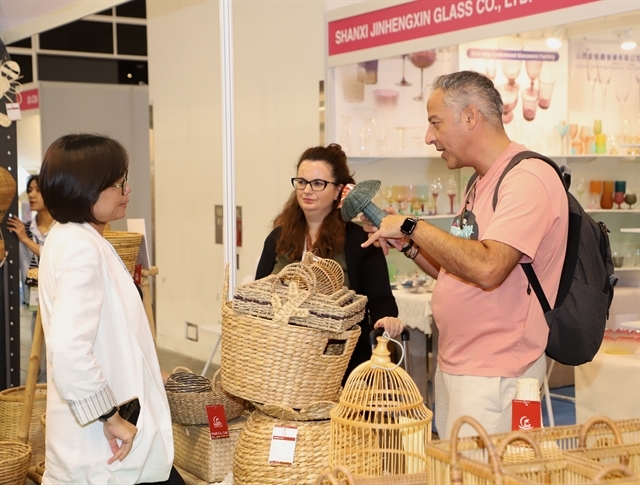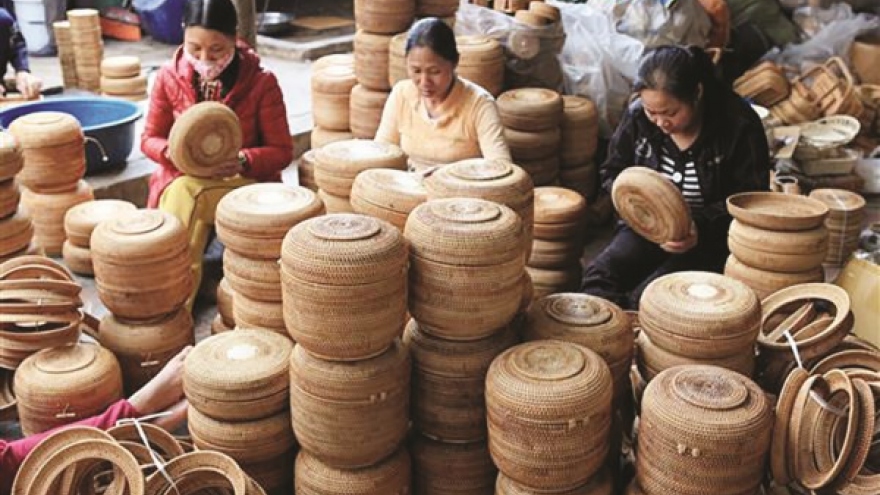Handicraft exports expected to reach US$2 billion in 2024
Due to market challenges and internal factors within the industry, Deputy Minister of Agriculture and Rural Development Tran Thanh Nam predicts that Vietnam’s handicraft export value in 2024 might only reach about US$2 billion.
“With concerted efforts, the export target of US$4 billion for next year may still be achievable,” he said.
Vietnamese handicrafts are exported to 163 countries and territories, accounting for nearly ten per cent of the total global market demand. From 2015 to 2019, the industry's export value grew by an average of 9.5% per year, rising from US$1.62 billion in 2015 to US$2.23 billion in 2019, with a goal of reaching US$4 billion by 2025.
However, according to the Vice Chairman of the Binh Duong Ceramics Association, Vương Sieu Tin, the number of ceramic production facilities in Binh Duong has decreased by 70-80% compared to its peak, with the workforce at each facility also significantly reduced.
The industry is facing multiple challenges, including low market demand, labour shortages and a lack of production materials.
"International shipping costs have risen, production costs are increasing and market demand is low, causing ceramic sales at many facilities to drop by 50% compared to previous periods," said Tin.
He added that although market demand may improve in the future, the Binh Duong ceramics industry continues to struggle to maintain its competitive edge and will face ongoing challenges without long-term solutions for labour and raw materials.
The difficulties faced by Binh Duong’s craft villages reflect the broader challenges of handicraft production nationwide.
Deputy Director of the Department of Cooperatives and Rural Development, Nguyen Thi Hoang Yen, emphasised that the handicraft industry is facing significant challenges, including a lack of industry links across production and insufficient collaboration between associations, businesses, training schools and craft villages.
Development remains fragmented, unsustainable and small-scale, relying primarily on household labour and space. There is no comprehensive model for craft village development linked to infrastructure investment or technology adoption.
Although handicraft designs have improved, their artistic and aesthetic value remains limited. Environmental concerns and unclear material origins also persist.
Seeking solutions
According to the Department of Cooperatives and Rural Development, there are currently 774,392 handicraft production facilities in Vietnam, focusing on wood, bamboo, ceramics, embroidery and small-scale mechanical products. More than 1.4 million workers are employed in these craft villages.
Yen said that Vietnam aims to preserve and promote the traditional cultural values of its craft villages while boosting production, enhancing competitiveness and increasing the value of handicraft products.
To accomplish this, coordinated efforts are needed to organise production, develop human resources, and preserve and develop craft villages.
Nam highlighted that three key elements in the handicraft value chain, raw materials, artisans and businesses, must be connected and support one another to drive growth. Additionally, government support through mechanisms and policies will contribute to the industry’s future development.
"We are eager to see businesses collaborate through industry associations to create a collective voice. This unity is essential for effectively promoting Vietnamese handicrafts and OCOP products to international markets," he said.
Nam also suggested that associations gather businesses to create catalogues showcasing handicraft products, which can then be shared with Vietnamese embassies to support global promotion of these products.
A noteworthy trend is the rise of online shopping and the globalisation of markets. This presents an opportunity for craft village products to extend beyond their local origins and national borders, reaching a global customer base.
“To effectively tap into the market amid increasing competition, craft villages and production facilities must adopt sustainable production practices, ensure transparency in product origins and craft compelling, unique stories around their products,” added Nguyen Minh Tien, Director of the Vietnam Trade Promotion Centre for Agriculture.




